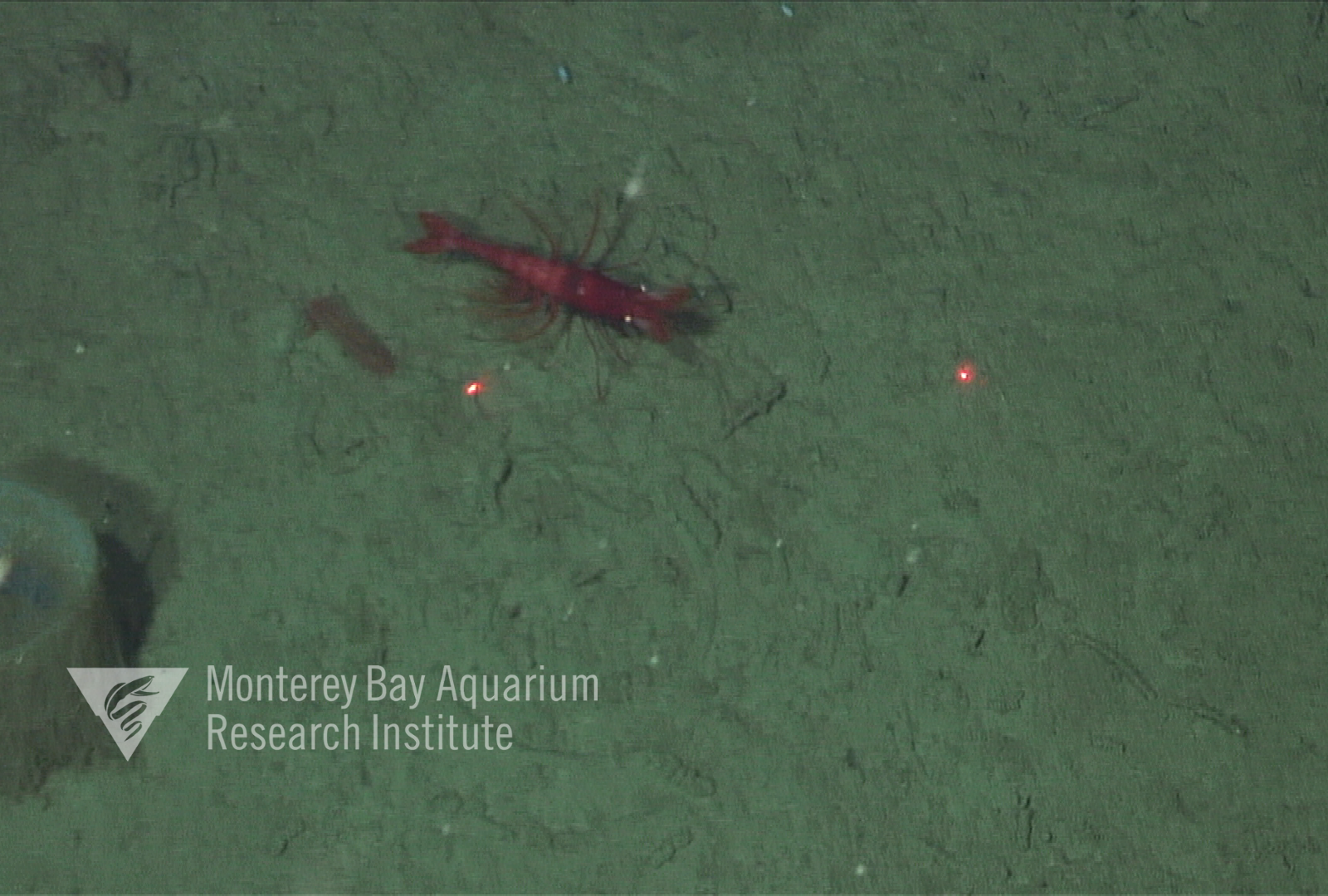Description
General:
Very large (can be over 20 cm in length), flared pleopods; this the first record from the Eastern Pacific. Legs on the abdomen are located at right angles laterally--only seen in penaeoids. Note that this name is still in flux. The name C. monstruosus was given to the larval form of this animal years ago. The name of the adult (P. armatus) will take precendence now that they are known to be the same animal. No ruling has been made by the ICZN as of Nov. 2018.
Geographic Information
Additional Information
Consulting taxonomist:
Mary Wicksten, Professor, Texas A&M University, College Station, Texas.
References
Encyclopedia of LifeTree of Life
World Register of Marine Species
National Center for Biotechnology Information
Bracken-Grissom, H.D., D.L. Felder, N.L. Vollmer, J.W. Martin, and K.A. Crandall (2012). Phylogenetics links monster larva to deep-sea shrimp. Ecology and Evolution, 2: 2367-2373. https:/dx.doi.org/10.1002/ece3.347
Wicksten, M. and L.A. Kuhnz (2015). A swimming deep-sea peneaoid shrimp photographed off California. California Fish and Game, 101: 146-148.
Citation:
Cerataspis monstrosus
(Gray, 1828) Deep-Sea Guide (DSG) at http://dsg/mbari.org/dsg/view/concept/Cerataspis%20monstrosus. Monterey Bay Aquarium Research Institute (MBARI). Consulted on 2025-12-07.

 Click here for a larger image.
Click here for a larger image.